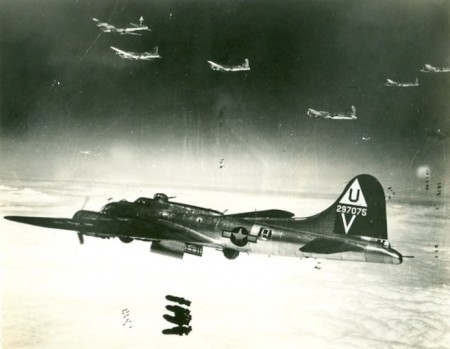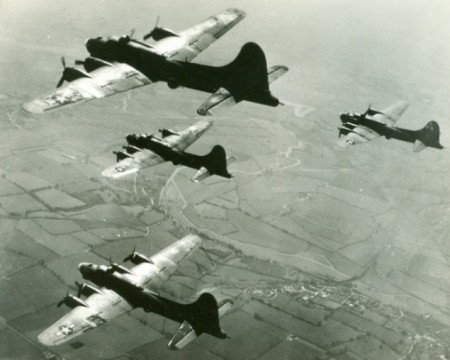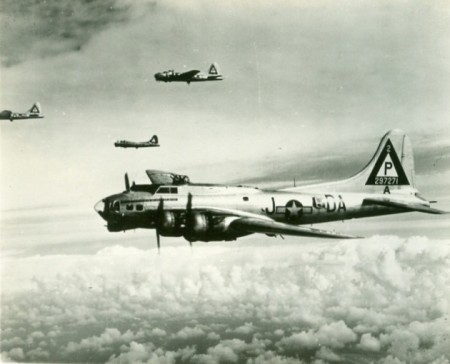America’s Heavy Hitter—The B-17 Flying Fortress
By Carolyn Apple, retired Dover-area emergency medicine physician and Delaware Division of Historical and Cultural Affairs volunteer
In previous blogs, I discussed military gliders used during World War II but now I would like to move on to an aircraft that played a pivotal role in the outcome of the war, the B-17 Flying Fortress. What, you ask, was a Flying Fortress? Developed by the Boeing Company in the 1930s, the B-17 was a four-engine heavy bomber aircraft used by the U.S. Army Air Force during World War II. It was a very effective weapons system, dropping more bombs during the war than any other American aircraft.

Why was the B-17 called the “Flying Fortress”? The name was coined when the plane, with its heavy firepower and multiple machine gun emplacements, made its public debut in July 1935. Richard Williams, a reporter for The Seattle Times, exclaimed, “Why, it’s a flying fortress!” The Boeing Company recognized the value of the name and had it trademarked.

Early in the war, the U.S. Army Air Force command felt that tightly packed formations of bombers would have so much firepower that they could fend off enemy fighters on their own without accompanying fighter escort. However, starting with the Combined Bomber Offensive in 1943, this theory was severely challenged. The goal of this offensive was to gain air superiority over the cities, factories, railways, refineries and battlefronts of Western Europe by performing round-the-clock bombing of these strategic areas in preparation for the invasion of France in 1944. The U.S. 8th Army Air Force, based in airfields in southern England, and the 15th Army Air Force, based in Italy, were assigned to daytime bombing of these areas while the British Royal Air Force performed nighttime bombing. Heavy losses of bombers and crews forced the Army Air Force to rethink its strategy and, rather than abandoning the daylight raids as suggested by other allies, it began assigning fighter escorts, such as the P-38 Lightning and P-51 Mustang, to accompany the bombers.

The B-17 was a sturdily built aircraft. Though many were shot down, many more severely damaged aircraft were able to return their crews safely to base. As each of these wounded airplanes returned, the legend of the B-17 grew.

The B-17 Flying Fortress became a symbol of the power of the United States and its air force. There were 12,731 B-17s built between 1936 and 1945. Though most B-17s were scrapped after the war, we are fortunate to have one on exhibit at the Air Mobility Command Museum in Dover, Del. Several other B-17s remain air-worthy to this day.
In my next blog, I will discuss military mission symbols.
The images in this blog were selected from the William D. Willis World War II Photographic Collection, one of the permanent collections preserved by the Division of Historical and Cultural Affairs. Mr. Willis of Dover, Del. served as a photographic technician with the Army Air Force during the Second World War. A display of items from the collection, “World War II Through the Lens of William D. Willis,” was on view at Legislative Hall in Dover from March 4, 2015 to Feb. 21, 2016.
Go to the following for Carolyn Apple’s earlier blogs exploring the subjects of images from the state’s William D. Willis World War II Photographic Collection.
On a Wing and a Prayer: The Use of Military Glider Aircraft in World War II—June 3, 2015
On a Wing and a Prayer: A Closer Look at Military Glider Aircraft Used in World War II—July 21, 2015


